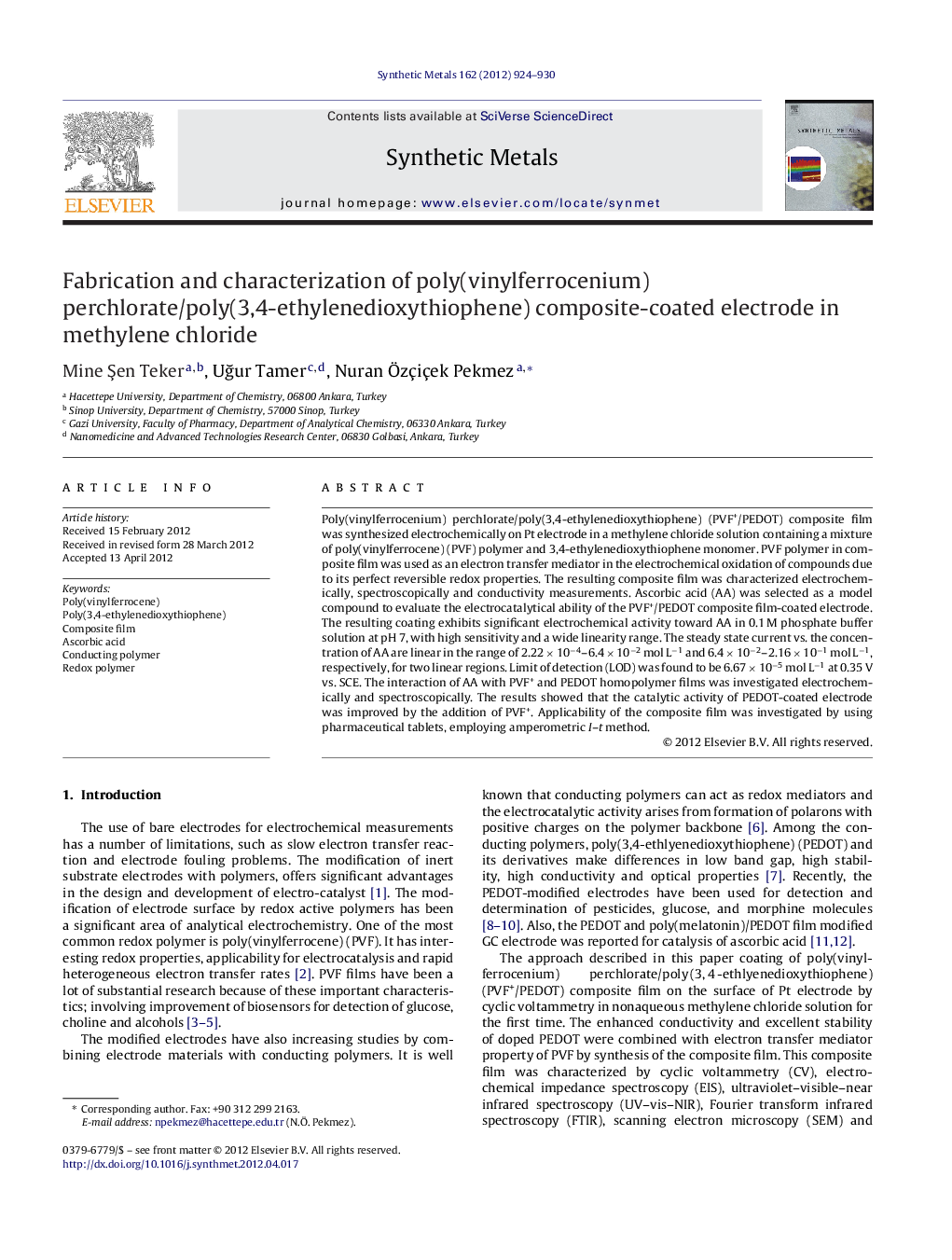| Article ID | Journal | Published Year | Pages | File Type |
|---|---|---|---|---|
| 1441625 | Synthetic Metals | 2012 | 7 Pages |
Poly(vinylferrocenium) perchlorate/poly(3,4-ethylenedioxythiophene) (PVF+/PEDOT) composite film was synthesized electrochemically on Pt electrode in a methylene chloride solution containing a mixture of poly(vinylferrocene) (PVF) polymer and 3,4-ethylenedioxythiophene monomer. PVF polymer in composite film was used as an electron transfer mediator in the electrochemical oxidation of compounds due to its perfect reversible redox properties. The resulting composite film was characterized electrochemically, spectroscopically and conductivity measurements. Ascorbic acid (AA) was selected as a model compound to evaluate the electrocatalytical ability of the PVF+/PEDOT composite film-coated electrode. The resulting coating exhibits significant electrochemical activity toward AA in 0.1 M phosphate buffer solution at pH 7, with high sensitivity and a wide linearity range. The steady state current vs. the concentration of AA are linear in the range of 2.22 × 10−4–6.4 × 10−2 mol L−1 and 6.4 × 10−2–2.16 × 10−1 mol L−1, respectively, for two linear regions. Limit of detection (LOD) was found to be 6.67 × 10−5 mol L−1 at 0.35 V vs. SCE. The interaction of AA with PVF+ and PEDOT homopolymer films was investigated electrochemically and spectroscopically. The results showed that the catalytic activity of PEDOT-coated electrode was improved by the addition of PVF+. Applicability of the composite film was investigated by using pharmaceutical tablets, employing amperometric I–t method.
► PVF+/PEDOT composite modified platinum electrode as a new catalytic surface. ► Cooperation of a redox polymer and a conducting polymer. ► This film exhibits catalytic activity toward the electrooxidation of ascorbic acid. ► The catalytic activity of PEDOT was improved by the addition of PVF+.
